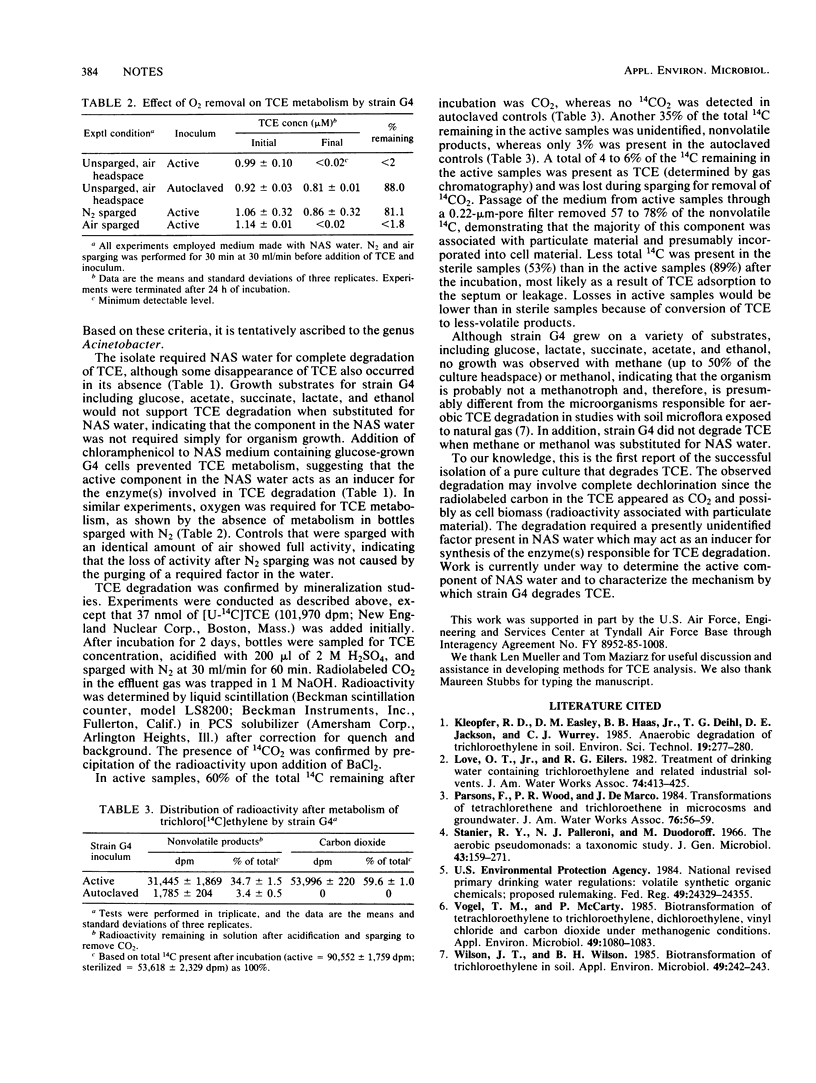Abstract
A number of soil and water samples were screened for the biological capacity to metabolize trichloroethylene. One water sample was found to contain this capacity, and a gram-negative, rod-shaped bacterium which appeared to be responsible for the metabolic activity was isolated from this sample. The isolate degraded trichloroethylene to CO2 and unidentified, nonvolatile products. Oxygen and water from the original site of isolation were required for degradation.
Full text
PDF

Selected References
These references are in PubMed. This may not be the complete list of references from this article.
- Stanier R. Y., Palleroni N. J., Doudoroff M. The aerobic pseudomonads: a taxonomic study. J Gen Microbiol. 1966 May;43(2):159–271. doi: 10.1099/00221287-43-2-159. [DOI] [PubMed] [Google Scholar]
- Vogel T. M., McCarty P. L. Biotransformation of tetrachloroethylene to trichloroethylene, dichloroethylene, vinyl chloride, and carbon dioxide under methanogenic conditions. Appl Environ Microbiol. 1985 May;49(5):1080–1083. doi: 10.1128/aem.49.5.1080-1083.1985. [DOI] [PMC free article] [PubMed] [Google Scholar]
- Wilson J. T., Wilson B. H. Biotransformation of trichloroethylene in soil. Appl Environ Microbiol. 1985 Jan;49(1):242–243. doi: 10.1128/aem.49.1.242-243.1985. [DOI] [PMC free article] [PubMed] [Google Scholar]


